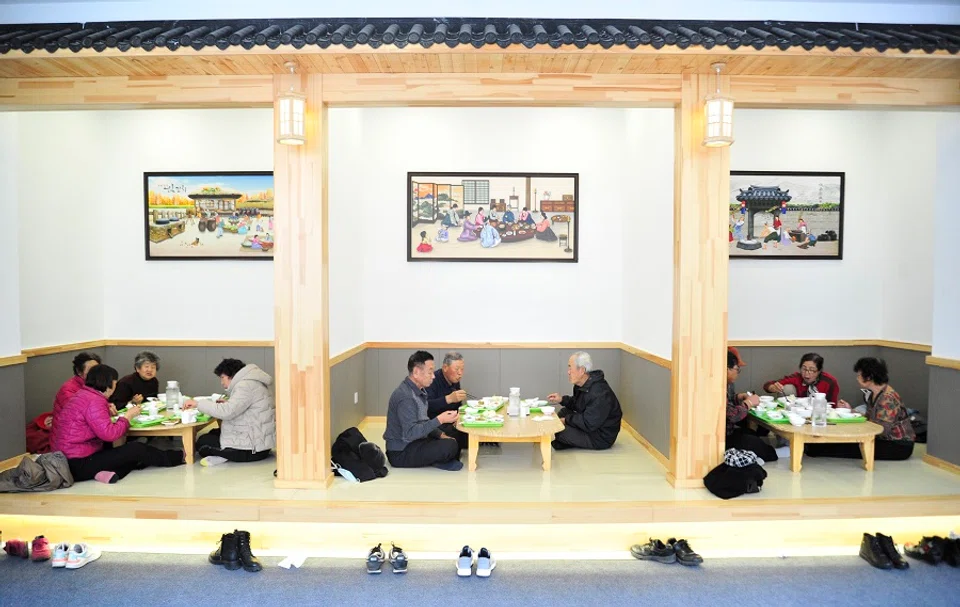Not everything has to be run by the state: Thoughts on communal canteens in China
US academic Wu Guo looks at the recent online furore over the mushrooming of state-run communal canteens in China and offers his views from the US. While providing food for the needy should be part of the state's responsibility, there should also be space for civil society, private enterprises and the public to play a role to create kind and healthy communities.

Recent reports about the revival of state-run community canteens have flooded the Chinese internet, triggering a slew of mixed reactions. I hope to offer some thoughts as an observer from the US.
Food culture in China versus US
In the summer of 2019, my son and I stayed at the Qianmen Hotel in Beijing as there was a theatre located inside the hotel that offered free nightly Peking opera performances to its guests. While the attendance was nothing like what I remembered from over two decades ago, it was still better than nothing for my son, a second-generation Chinese immigrant born and raised in the US.
When I brought my son for a stroll and some breakfast at the neighbouring Hufangqiao (虎坊桥) and Tianqiao (天桥) areas, which had several small convenience stores and breakfast spots, it affirmed my view that living in China's cities is truly more convenient than living in the US.
While I did not specifically find out from the store owners the nature of their establishments, it would indeed be a well-thought policy if these neat, clean, affordable and accessible local stores and breakfast shops were intentionally planned or funded by the government.

Today, China's public canteens seem to have become an urban phenomenon and are not mandatory, unlike the communal canteens in rural areas back then. Some research show that when centralised and mandatory canteens were set up during the Great Leap Forward, the farmers spent a lot of time travelling long distances in mountainous regions just for a meal. Putting aside the absurdity of losing the right to cook your own food, and the monopoly and waste of food resources in such canteens, the disadvantages of communal canteens surely outweighed the benefits.
Thus, during the Mao Zedong era and under the leadership of Liu Shaoqi and Deng Xiaoping, mass communal canteens were abolished after a brief experiment exposed their drawbacks. However, contemporary urban community-based canteens have the advantage of a concentrated population and are in line with the Chinese cultural mentality of favouring amenities that are walkable and convenient. They have become a useful complement to the lives of people who do not drive or are not well-off, especially the elderly.
Americans do not mind eating canned food or cheap microwavable frozen meals targeted at those living alone. In contrast, the Chinese prefer freshly prepared meals and hot soup...
Since most of the US is quite spread out, going out to the shops is rather inconvenient. In the US, I often see elderly or disabled people with limited mobility being ferried to the local supermarkets by relatives or social workers. They would whip out their benefit cards with shaky hands and stock their trolley with a month's worth of groceries before leaving in a wheelchair or hobbling away.

Americans do not mind eating canned food or cheap microwavable frozen meals targeted at those living alone. In contrast, the Chinese prefer freshly prepared meals and hot soup, are particular about the balance between meat and vegetables, and want variety and affordability. Thus, urban community canteens, regardless of who runs them, are a good idea as long as they are accessible and in line with people's needs.
Civil society, private enterprises and individuals
While I believe that these establishments set up for convenience are a good thing in itself, civil society and market forces can also meet these needs.
My relatives in China, including an elderly 80-year-old, are never concerned about feeding themselves - instead, they worry about the high cost and inconvenience of seeing a doctor. This is because, in densely populated cities, food stalls are ubiquitous, along with restaurants selling inexpensive set meals, snack stalls specialising in vermicelli, noodles and baozis (包子, steamed buns with a variety of fillings), and small supermarkets selling fresh vegetables and poultry.
These basically meet the diverse needs of the majority of elderly who either eat out or cook at home. In fact, most able-bodied elderly in Chinese cities are physically active and take frequent walks, so their dining choices are not limited to their community. Of course, people who are disabled and require special care are another matter, otherwise, anybody can easily buy food from outside.
In fact, welfare- or charity-driven canteens do not need to be set up by the state.

Based on some Chinese reports and images, the food served in one of the community canteens in a big city looks delicious and is surprisingly affordable. But these meals merely satisfy the needs of able-bodied middle-aged and elderly people who are greedy for cheap deals, which is icing on the cake for them. Could these canteens also deliver free meals to disabled elderly people who are unable to leave their homes? This would be impossible or unsustainable in any society.
In fact, welfare- or charity-driven canteens do not need to be set up by the state. I came across a small restaurant in Beijing that operates on a unique model whereby diners at the restaurant can prepay for a dish, which will be written on a sticker. A person in need can enjoy a meal for free by choosing the dish from the wall of stickers. Such an operating model not only evokes the empathy and love of diners who are better off, but also takes care of the dignity of the poor. It could become an effective model of mutual assistance among the masses if widely implemented.
There is a restaurant in South Korea that provides free meals to underprivileged children, and many paying diners will selflessly contribute to these free meals to support the restaurant's good deeds. This strikes a balance between business and charity and forms an indirect but friendly interaction between two consumer groups of different socioeconomic statuses. Meanwhile, the elderly with limited mobility would receive a day's worth of meals delivered in one go from the government.
Building kind and resourceful communities
Religious organisations such as churches and temples in South Korea also play a huge role in feeding the needy. To a certain extent, religious organisations benefit from social contributions and tax exemptions, and giving back to society is both an obligation and a true practice of core teachings such as compassion, charity and love.
As long as there is kindness and resources, the people's motivation to do good is protected, and a competitive market mechanism is introduced and maintained, many things can be accomplished.

Non-governmental organisations (NGOs) in various countries also play similar roles. When I just arrived in the US, I participated in a small weekend charity event organised by an NGO with its own means of receiving donations. Perhaps out of interest in Asian culture, the volunteers prepared several dishes accompanied by rice. They would drive to a downtown park and distribute free meals to the homeless on weekend mornings.
Interestingly, as the Americans do not know how to properly cook rice, those who received the free meals realised that the rice was undercooked. The volunteers felt bad after someone pointed out the blunder. But the whole situation was properly handled and everyone remained in good spirits.
A few years ago, I volunteered for a local NGO that aims to raise college tuition for underprivileged high school students. Some of the fundraising ideas I proposed during internal meetings were adopted. During this process, I witnessed the potential and power of the masses, even though it required organisers and volunteers to unwaveringly and continually commit a massive amount of time and energy to their cause.
These are all case studies of a well-functioning civil society. As long as there is kindness and resources, the people's motivation to do good is protected, and a competitive market mechanism is introduced and maintained, many things can be accomplished.
This article was first published in Lianhe Zaobao as "大食堂、社区服务与公民社会".
Related: Cooperatives are making a comeback. Is China preparing for combat and famine? | The poor in the US and China live different lives | US academic: Equality is a myth, whether in the US or China | Every individual counts: China should go for 'common development' rather than 'common prosperity' | Not just a tech war: What China can do to better compete with the US and create a better world



![[Photos] Fact versus fiction: The portrayal of WWII anti-Japanese martyrs in Taiwan](https://cassette.sphdigital.com.sg/image/thinkchina/3494f8bd481870f7c65b881fd21a3fd733f573f23232376e39c532a2c7593cbc)

